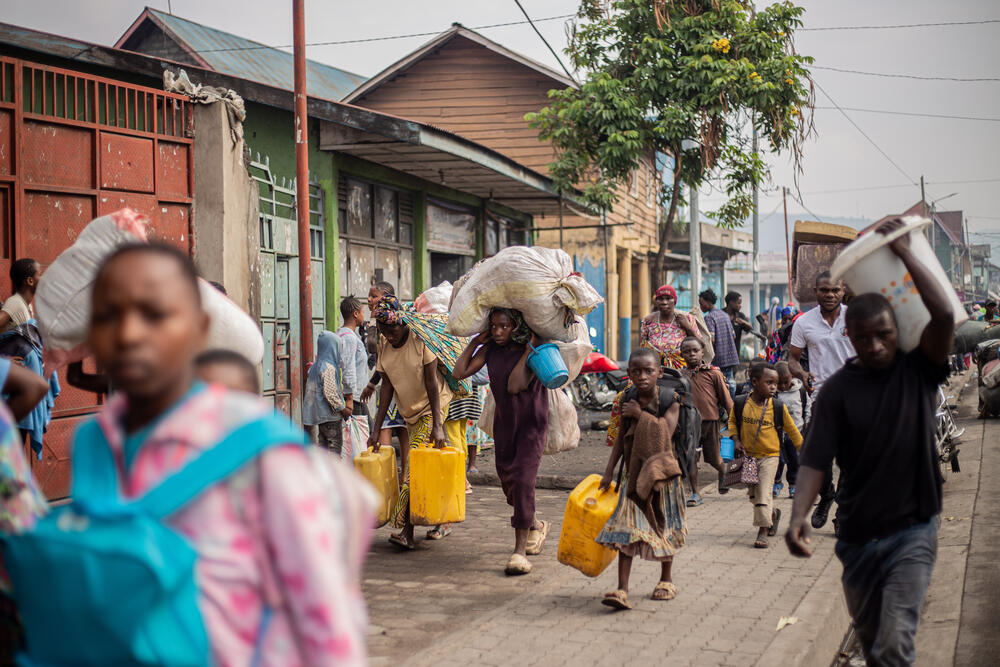
Migration in Focus: The DRC and Rwanda Through the SIHMA Atlas Lens
Human migration in Africa is shaped by a mix of historical, economic, and political factors, and the Atlas of African Migration by SIHMA provides detailed insights into these dynamics. The Democratic Republic of the Congo (DRC) and Rwanda, as neighbouring countries in the Great Lakes region, offer contrasting but interconnected migration stories, highlighting how displacement, urbanization, and policy interact across borders.
The Democratic Republic of the Congo: Migration at the Crossroads
The DRC functions simultaneously as a country of origin, transit, and destination for migrants. Historically, migration was influenced by indigenous movements, colonial exploitation, and regional instability (SIHMA, 2025). Internally, the DRC faces one of the world’s largest displacement crises, with millions fleeing conflict, natural disasters, and insecurity toward urban centres such as Kinshasa (SIHMA, 2025). The DRC also hosts migrants from neighbouring countries like Rwanda, Burundi, Uganda, and Angola. Outward migration by Congolese citizens is significant but difficult to quantify due to irregular movement and data limitations (SIHMA, 2025). Women and children face heightened vulnerability to trafficking, exploitation, and forced recruitment by armed groups. Although the DRC is a signatory to international conventions, implementation gaps persist, and the country continues to host large numbers of refugees, many outside formal camps (SIHMA, 2025).
Rwanda: Migration, Return, and Reintegration
Rwanda’s migration patterns have been deeply shaped by colonial legacies and the 1994 genocide, after which millions fled to neighbouring countries, especially the DRC (SIHMA, 2025). Since then, more than 3.5 million refugees have returned, supported by reintegration programs and strengthened migration governance structures such as the Diaspora General Directorate (SIHMA, 2025). Internal rural-to-urban migration remains high, with women representing a slight majority of working-age internal migrants (SIHMA, 2025). Rwanda also hosts refugees, mainly from the DRC and Burundi, while simultaneously seeking skilled migrants under East African Community mobility agreements. Remittances remain a key contributor to Rwanda’s socioeconomic development (SIHMA, 2025).
Cross-Border Dynamics: DRC ↔ Rwanda
Migration between the DRC and Rwanda is intertwined due to shared history, porous borders, and recurring political tension. Refugee flows have moved in both directions for decades: Rwandans fled to the DRC during the genocide, while Congolese populations continue to cross into Rwanda seeking safety or opportunity (SIHMA, 2025). Despite insecurity, especially in North and South Kivu cross-border movement for trade, labour, and family networks remains active (SIHMA, 2025). This interdependence highlights the need for coordinated border management, improved protection mechanisms, and strengthened crisis-response systems.
Connecting Migration Trends to the 2025 DRC–Rwanda Peace Process
Recent political developments significantly shape migration patterns. In June 2025, the DRC and Rwanda signed a U.S.-brokered peace agreement, establishing joint security coordination, verification mechanisms, and economic cooperation frameworks (U.S Department of State, 2025). The agreement connects security commitments, such as troop withdrawals to the Regional Economic Integration Framework. In November 2025, mediated talks in Doha produced a framework agreement between the DRC and the M23 movement, outlining steps toward dialogue, demobilization, and civilian protection (Aljazeera Staff, 2025)
Challenges and Policy Implications
Despite progress, migration governance challenges remain:
- Data limitations, especially in the DRC, hinder evidence-based policymaking.
- Protection gaps persist for women, children, and trafficking survivors (SIHMA, 2025).
- Reintegration pressures in Rwanda require sustained investment.
- Insecurity in eastern DRC continues to disrupt mobility and service delivery.
- Limited regional coordination restricts effective border and migration management.
Closer collaboration particularly under the new peace agreements, could improve migration outcomes, strengthen humanitarian responses, and drive development-oriented mobility.
Migration in the DRC and Rwanda reflects the complex interplay of history, conflict, governance, and socioeconomic pressures. The 2025 peace agreements introduce a promising framework that, if implemented effectively, could reduce displacement, improve cross-border mobility, and stabilize migration patterns. SIHMA’s Atlas of African Migration offers essential insights that can guide evidence-based policymaking and strengthen regional cooperation.
References
Aljazeera Staff. (2025, Nov 15 ). DRC, Rwanda-backed M23 sign framework deal for peace after talks in Qatar. Retrieved from Aljazeera: https://www.aljazeera.com/news/2025/11/15/drc-rwanda-backed-m23-sign-framework-deal-for-peace-after-talks-in-qatar
SIHMA. (2025, April). Democratic Republic of Congo. Retrieved from SIHMA: https://www.sihma.org.za/african-migration-statistics/country/democratic-republic-of-congo
SIHMA. (2025, April). Rwanda. Retrieved from SIHMA: https://www.sihma.org.za/african-migration-statistics/country/rwanda
U.S Department of State. (2025, June 27). Peace Agreement Between the Democratic Republic of the Congo and the Republic of Rwanda. Retrieved from U.S Department of State: https://www.state.gov/peace-agreement-between-the-democratic-republic-of-the-congo-and-the-republic-of-rwanda
Categories:
Tags:

